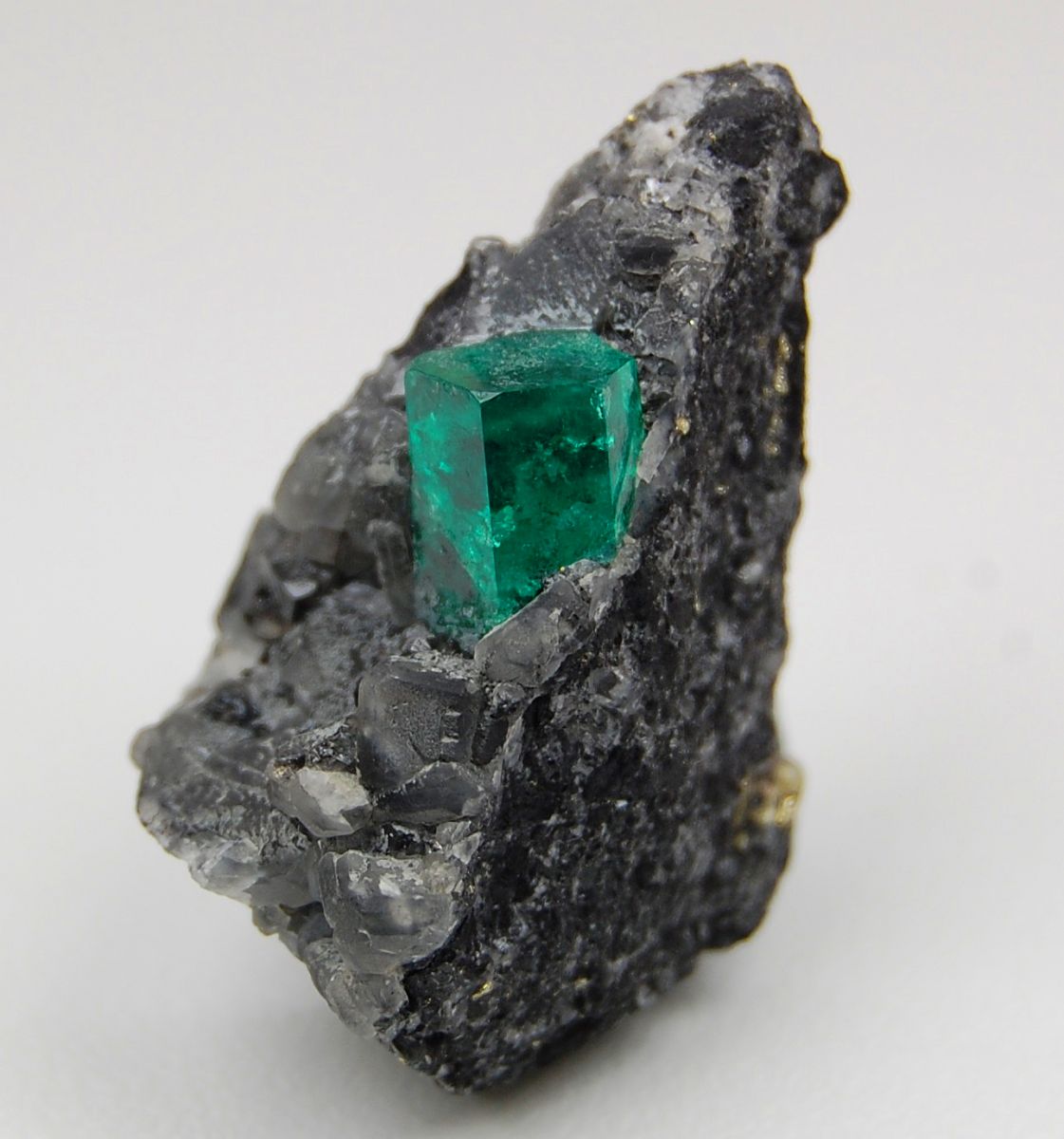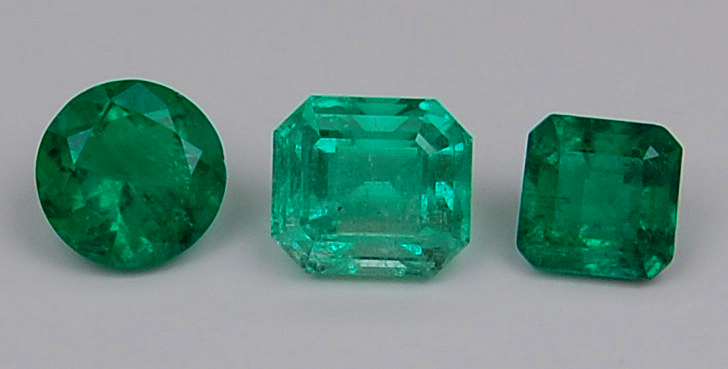

Introduction: Emerald is a variety of the beryl species. Pictured on the left is an emerald crystal on matrix from the La Pita Mine, Boyaca, Colombia. The cut stones are all from Colombia weighing (left to right), 1.04 ct, 1.76 ct and 0.76 ct
Colors: Medium to dark green to strongly bluish-green. Gems that are extremely light to light in tone would be considered as green beryl as the intensity of color would not be strong enough to be called emerald.
Clarity: Emerald is of Type III clarity. Gems of this type typically grow with many inclusions in nature and those inclusions are usually eye visible. Multi phase inclusions, mica, calcite and pyrite are all commonly seen inclusions in emeralds. Often, the source or country of origin of an emerald can be determined based on the type of inclusions that are identified. Trapiche emeralds are Colombian emeralds that form with black carbonaceous shale (the host in which the emeralds forms) radiating from the center of the crystal as spokes on a bicycle wheel. They are usually cut as slices or cabochons.
Stone Sizes: Many museums display fine and large emeralds, both as crystals and gemstones including a 117 ct Colombian stone at the Smithsonian. The Banco de la Republica in Bogota, Colombia houses a collection of extraordinary crystals up to 1796 carats in weight. Most faceted emeralds in the market today are up to 15 carats in weight.
Localities: Major sources for emerald include Colombia (Muzo, Chivor, Gachala, Cosquez, La Pita) Zambia (Miku, Mifulira), Brazil, Pakistan (Swat Valley), Afghanistan (Panjshir Valley) and Russia. In the United States, fine emerald has been found on a very small scale in Hiddenite, North Carolina.
Treatments:
-Oiling/Resin Infusion (O) has been a known treatment of emeralds for centuries. In this treatment, surface breaking fissures are filled with colorless oil, wax or resin to improve the appearance. The goal is to hide inclusions, improve transparency and sometimes improve color. It is routinely performed on stones with surface breaking fissures. The treatment can be detected with magnification. Stability is fair to poor as oils can leak out in time and resins can discolor.
Gemology:
-Refractive Index: 1.577-1.583 (+/- 0.017)
-Birefringence: 0.005 to 0.009
-Optic Character: Doubly refractive, uniaxial negative
-Dispersion: 0.014
-Specific Gravity: 2.72 (+0.18, -0.05)
-Hardness: 7.5-8
-Toughness: Poor to good
-Chemical Composition: Be3Al2Si6O18
-Cause of Color: Chromium, sometimes vanadium or by both chromium and vanadium.
-Absorption Spectra: Distinct lines at 683 and 680.5 nm, less distinct lines at 662 and 646 nm, partial absorption between 630 and 580 nm and almost complete absorption of the violet
-Fluorescence: Usually inert but may fluoresce (LW) orangy-red to red in very fine colors. Oil in fractures may fluoresce yellowish-green to greenish-yellow in LW
-Cleavage: Indistinct in one direction and almost never seen.
-Phenomena: Chatoyancy (rare)
Name: Emerald is from the Greek smaragdos, through the Latin smaragdus to Middle English, esmeralde.
Dates: Emerald is the birthstone for May and the 20th anniversary stone.
Care: The ultrasonic and steam cleaner should never be used. Warm, sopay water is generall safe. Strong detergents and vigorous scrubbing on oiled stones should be avoided.
To see available emeralds, click here.
